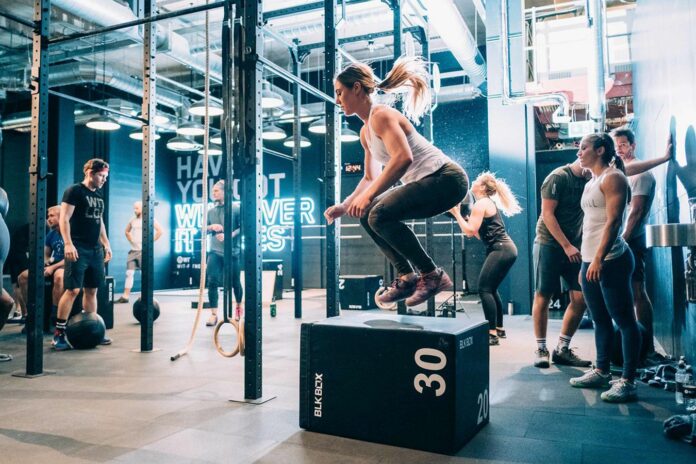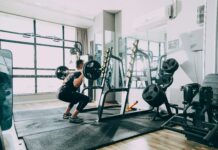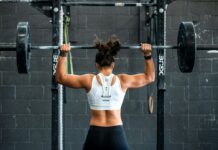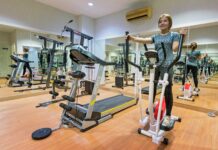Table of Contents
Introduction
In today’s fitness world, there’s a lot of talk about different types of workouts. You might hear about bodybuilding, cardio, HIIT, yoga, and more. But one type of exercise that’s gaining attention is functional fitness. Unlike traditional workouts, which often focus on specific muscle groups or aesthetic goals, functional fitness aims to improve your ability to perform everyday activities. In this article, we’ll explore what functional fitness is, how it differs from standard exercise routines, and why it might be the solution to overcoming some common limitations of traditional workouts.
What is Functional Fitness?
Functional fitness focuses on movements that mimic everyday activities. The idea is to train your body to handle real-life situations more effectively and efficiently. These exercises typically involve multiple muscle groups and joints, promoting better coordination, balance, and strength. For example, a functional fitness workout might include movements like squatting, lifting, pushing, pulling, and rotating – all actions that you might do in your daily life.
The Limitations of Standard Exercise
Isolation of Muscle Groups
Traditional workouts often isolate specific muscles. While this can be great for building size and strength in targeted areas, it doesn’t always translate well to real-world activities. For instance, doing bicep curls might make your arms look good, but they won’t necessarily help you lift a heavy box from the floor in a safe and efficient manner.
Lack of Functional Movement
Many standard exercises don’t involve the same movements we use in our daily lives. Machines at the gym, for example, guide your movements in a very controlled way. While this can be helpful for beginners or those recovering from injury, it doesn’t train your body to move naturally. Functional fitness, on the other hand, emphasizes movements that mirror everyday tasks.
Neglect of Stability and Balance
Traditional strength training often overlooks the importance of stability and balance. Machines can support you, allowing you to lift heavier weights without working on your stabilizing muscles. Functional fitness, however, often involves exercises that challenge your balance and stability, which are crucial for preventing injuries in real life.
Imbalance and Overuse Injuries
Focusing too much on certain muscle groups can lead to imbalances and overuse injuries. For example, if you always train your chest and neglect your back, you might develop poor posture and shoulder problems. Functional fitness promotes a more balanced approach, working multiple muscle groups together, which can help prevent these issues.
How Functional Fitness Addresses These Limitations
Full-Body Movements
Functional fitness exercises engage multiple muscle groups and joints simultaneously. This not only makes the workouts more efficient but also helps your body learn to work as a cohesive unit. For example, a functional exercise like a deadlift works your legs, core, and upper body all at once, mimicking the action of picking something up off the ground.
Improved Coordination and Balance
Because functional fitness incorporates a variety of movements, it helps improve your coordination and balance. Exercises often require you to stabilize your body, which engages your core and smaller stabilizing muscles. This can translate to better performance in daily activities and sports, as well as a reduced risk of falls and injuries.
Real-Life Applicability
Functional fitness exercises are designed to mimic real-life movements. This means the strength and skills you build in your workouts are directly applicable to your everyday life. Whether it’s carrying groceries, playing with your kids, or doing housework, you’ll find these tasks easier and more manageable thanks to functional training.
Injury Prevention
By promoting balanced muscle development and improving your body’s ability to stabilize itself, functional fitness can help prevent injuries. You’ll be less likely to overuse certain muscles or strain yourself during everyday activities. Plus, the focus on proper movement patterns can help you avoid common injuries related to poor form.
Examples of Functional Fitness Exercises
Squats
Squats are a fundamental functional exercise that mimics the movement of sitting down and standing up. They work your legs, glutes, and core, and can be modified in many ways to increase difficulty or target different muscle groups.
Lunges
Lunges are great for building leg strength and improving balance. They simulate movements like walking, running, and climbing stairs, making them very practical for daily life.
Deadlifts
Deadlifts involve lifting a weight from the ground to your hips, which is a movement you do every time you pick something up. They work your legs, back, and core, making them a powerful functional exercise.
Push-Ups
Push-ups are a simple yet effective way to build upper body and core strength. They mimic the action of pushing yourself up from the ground, which is a common movement in daily life.
Planks
Planks are excellent for building core stability. A strong core is essential for almost every movement you make, from bending over to tie your shoes to lifting heavy objects.
Kettlebell Swings
Kettlebell swings are a dynamic exercise that works your whole body, particularly your hips, glutes, and core. They mimic the action of swinging a heavy object, which can be useful in many real-life scenarios.
Medicine Ball Throws
Medicine ball throws improve your explosive power and coordination. They mimic actions like throwing or catching, which are common in many sports and daily activities.
Creating a Functional Fitness Routine
Warm-Up
Start with a warm-up to get your body ready for exercise. This could include light cardio like jogging or jumping jacks, followed by dynamic stretches to loosen up your muscles and joints.
Core Exercises
Incorporate exercises that strengthen your core, such as planks, Russian twists, or leg raises. A strong core is essential for stability and balance in all your movements.
Lower Body Exercises
Include exercises like squats, lunges, and deadlifts to build strength and endurance in your legs and glutes. These muscles are crucial for many everyday activities.
Upper Body Exercises
Work your upper body with exercises like push-ups, pull-ups, and rows. These will help you build strength in your chest, back, and arms.
Full-Body Movements
Incorporate full-body movements like kettlebell swings, medicine ball throws, and burpees. These exercises engage multiple muscle groups and mimic real-life movements.
Cool-Down
Finish with a cool-down to help your body recover. This could include static stretching to improve flexibility and reduce muscle soreness.
Tips for Success
Start Slow
If you’re new to functional fitness, start with basic exercises and gradually increase the intensity. Focus on learning the correct form before adding weights or trying more advanced movements.
Listen to Your Body
Pay attention to how your body feels during and after your workouts. If something doesn’t feel right, stop and assess your form. It’s better to take it slow and avoid injury than to push yourself too hard.
Stay Consistent
Like any fitness routine, consistency is key. Aim to incorporate functional fitness exercises into your routine several times a week. Over time, you’ll start to see improvements in your strength, balance, and overall fitness.
Mix It Up
Variety is important to prevent boredom and keep your body challenged. Mix up your exercises and try new movements to keep your workouts interesting and effective.
Seek Professional Guidance
If you’re unsure about how to start or want to ensure you’re doing the exercises correctly, consider working with a personal trainer. They can help you design a functional fitness routine that’s tailored to your needs and goals.
Conclusion
Functional fitness is a powerful and practical approach to exercise that addresses many of the limitations of traditional workouts. By focusing on movements that mimic everyday activities, functional fitness helps improve your overall strength, balance, and coordination. This not only enhances your performance in the gym but also makes daily tasks easier and reduces your risk of injury. Whether you’re a fitness enthusiast or just looking to improve your quality of life, incorporating functional fitness into your routine can provide numerous benefits. So why not give it a try? Your body will thank you.





